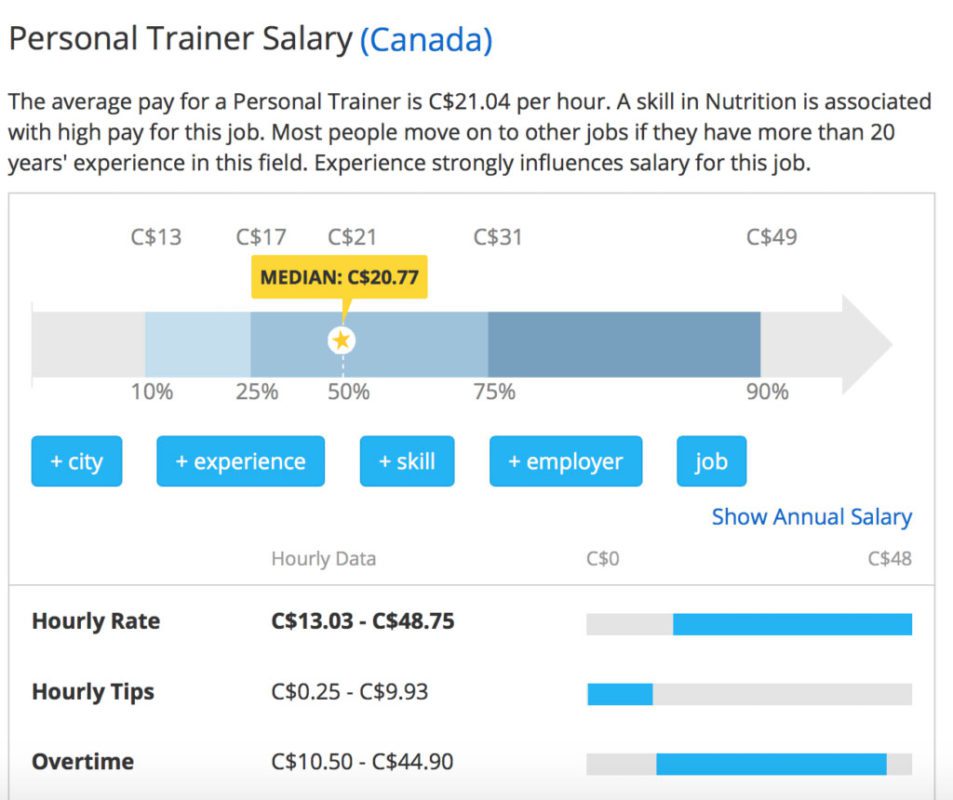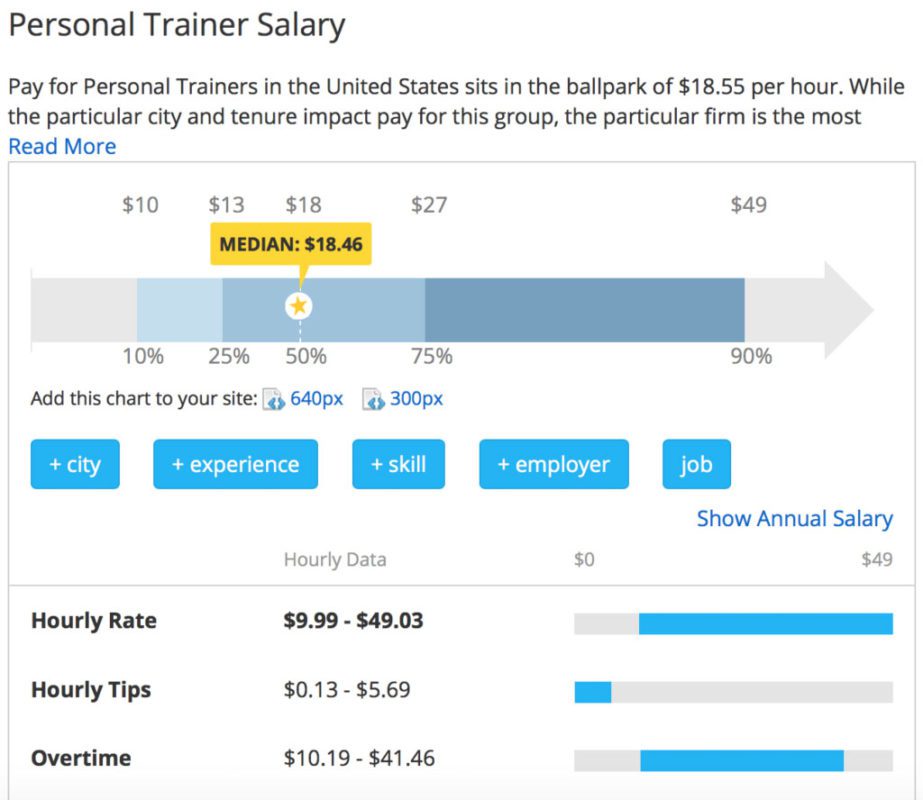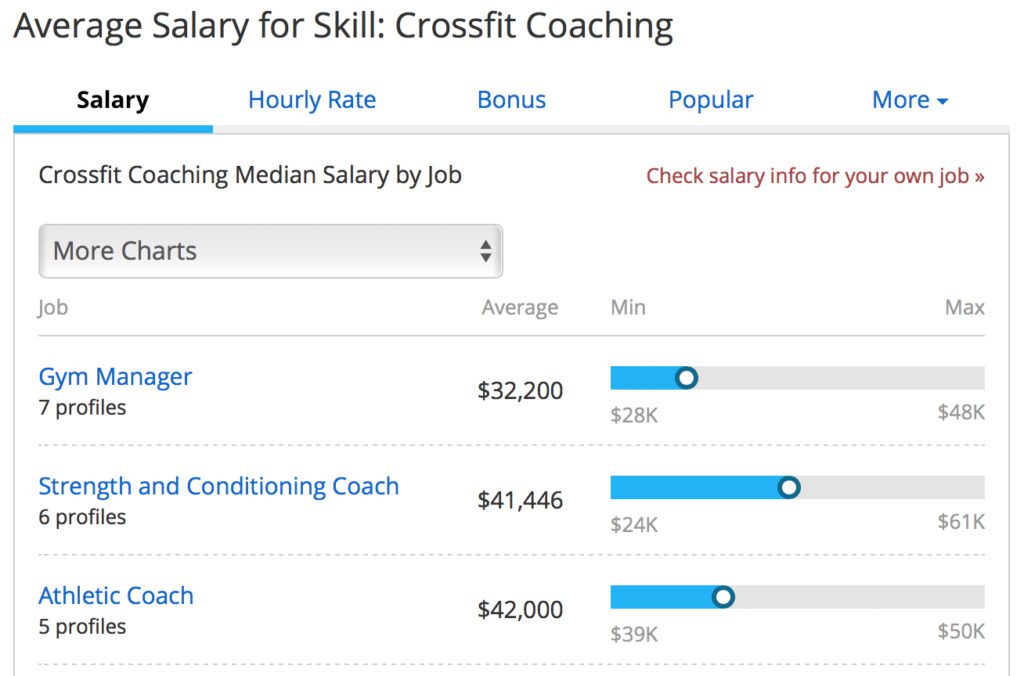In this series, I’m telling you how to help others build careers on the platform you’ve built for yourself—your gym business.
When we started this conversation, I said that doing it right creates opportunity; doing it wrong creates anger and a dead, smoking business.
The point of stress for most gym owners comes down to this:
“How much do I pay my staff?”
Gym Owners: How to Pay Your Staff
Think of your staff like the players on a football team. Think of your payroll budget as your “salary cap.” If you cap your earnings at 33 percent of your gross revenue and your expenses at 22 percent, then you can afford to pay up to 44 percent of your total gross revenue to your staff.
How you get there is up to you, and you can see the entire breakdown in our “Intrapreneurialism 101” guide (download it here for free).
I don’t like playing the “wait and hope it comes out OK” game, so I take a more directive approach we call the 4/9ths Model.
We pay our coaches 44 percent of the gross revenue created by CrossFit groups, personal training and specialty programs. Sometimes coaches launch a program so large that it becomes a separate company (this has happened to me several times).
The 4/9ths Model is supported by data from other industries, as well as accounting strategies like Profit First. And even though we get more granular with our breakdown, most consultants in the CrossFit industry copy this model, though they might rename it to make it their own. Or they might pay a higher percentage for personal training but expect coaches to run classes for free.
However you want to slice it, the 4/9ths Model is the most effective for gyms:
- It provides better pay than a trainer will ever find at a big-box gym.
- It creates opportunities to be entrepreneurial, without risk (we call that “intrapreneurialism”).
- It allows the box to cover costs and prioritize paying the owner.
- It removes the ceiling effect created by salaries.
Personal Trainer Salaries: Data
Back to the “salary cap” analogy.
You’re allowed, by league rules, to spend 44.4 percent of your gross revenue on payroll.
This doesn’t include your pay as an owner or your profit.
Those payroll expenses include taxes, health care and all other costs associated with paying your staff. This is why I prefer to have contractors instead of employees: I want my crew to have the same taxation opportunities I have without the entrepreneurial risk. But that’s another subject.
Want to hire an admin person? Great—as long as the expense of the wage fits under your salary cap of 44.4 percent.
The industry average is below 25 percent. If you call a local franchise gym and ask “how much do you pay your trainers?” they’ll give you a number between $15 and $25 per hour—while they charge over $80 for personal training in most cases and don’t pay at all for group coaching.
See the pictures below for average personal trainer pay in Canada and the U.S.:


Also interesting is the average pay for a “gym manager,” “strength and conditioning coach” and “athletic coach.” In the survey below, “gym manager” seemed to mostly mean “sales manager,” on a commission basis. “Strength and conditioning coach” seemed to mean a CSCS-certified employee of a sports team, and “athletic coach” seemed to mean an employee of a university. The interesting part here is that these numbers haven’t changed since I was in college 20 years ago.

CrossFit’s real benefit to the fitness world has been the opportunity for passionate coaches to make a real living. I know dozens of Two-Brain family members making more than double the $40,000 ceiling paid to employees in our industry. It’s not even possible to name all the CrossFit coaches at successful boxes (that’s key) who are making more than these numbers on the 4/9ths Model.
The real opportunity in fitness now is to work at a successful CrossFit gym. And successful CrossFit gyms pay their owners well, pay their coaches well and pay their bills on time.
But they don’t start by saying, “I need to make more money before I can pay my coaches.” They start by segmenting their revenues and leveraging their time.
FAQ
“But why do my coaches make less than half of what the gym makes on the session?”
Well, you provide all the tools, the audience, the insurance, the marketing, the bank fees—and the list goes on.
“How do I explain to my coaches that they keep less than half of the total revenue?”
Your staff won’t have perspective on the costs or time required to run a business. So don’t talk to them about percentages and ratios; talk to them about dollars and cents.
A great conversation about an intrapreneurial opportunity sounds like this:
“Jim, we’re going to start doing a lot more personal training. How would you like to make $34 per hour to coach clients one on one?”
“How do I hire and pay for non-client-facing roles?”
You can do this any way you want, as long as you keep your total staff costs (excluding your pay) under 44 percent.
“But that guy on Instagram says he pays his coaches 70 percent. He says you’re wrong!”
That guy on Instagram hasn’t built one successful gym, let alone thousands of them worldwide. Here’s the counterpoint: 70 Percent of $0 is $0.
“But paying 4/9ths of a personal-training session still isn’t enough money—my coaches can make more money in their other jobs!”
If $32 for a $70 session is less than what they’re making elsewhere, they should probably keep the day job and pursue coaching part time.
Look, you can get a job as a coach after a weekend course. You can become insurable after taking a test online. It’s one of the highest-paying jobs available for such a low barrier to entry. But still, most coaches fail to make a living because they don’t know how to get clients. And you’re solving that problem for them!
If, however, the hourly rate your coaches make from 44 percent of a session isn’t high enough, don’t slice off more of the pie. Make a bigger pie. Increase your rates.
Your business exists to serve, in this order:
- Your family.
- Your clients.
- Your staff.
- Your local community.
You love your staff. I get it. Give them all of the opportunity you can—but don’t kill the tree by hacking off its branches.

